A Report from Energy Ant — My Trip to the 2011 Solar Decathlon in Washington, DC
Nineteen Solar Decathalon houses formed a "Solar Village" in Washington, DC
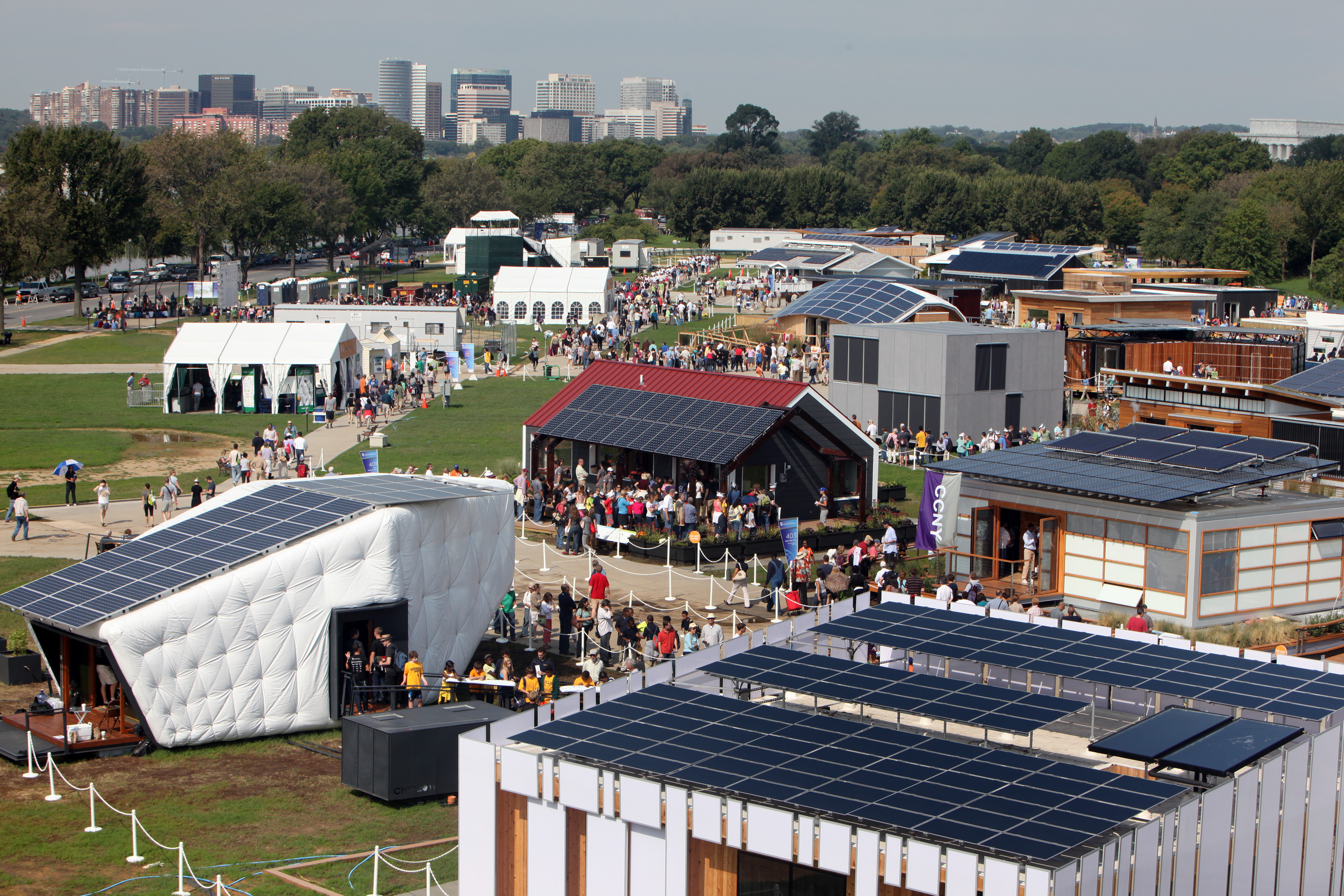
Source: Stefano Paltera, U.S. Department of Energy
Energy Ant admired the University of Tennessee's "Living Lighthouse"
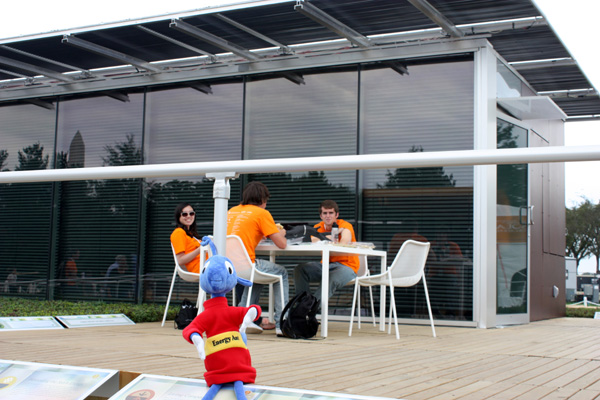
Source: U.S. Energy Information Administration
Energy Ant and friends line up for Team Massachusett's "4D Home"
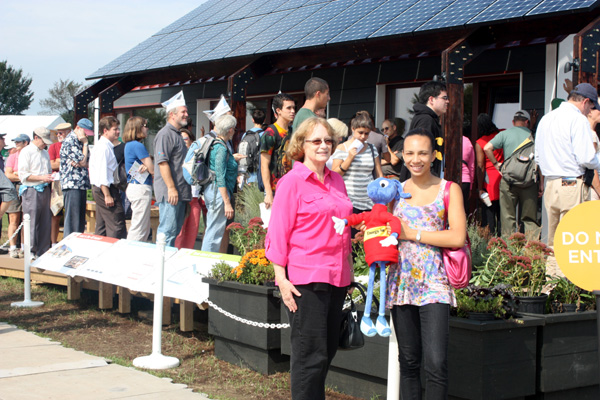
Source: U.S. Energy Information Administration
Team Canada's "TRTL" house made everyone smile
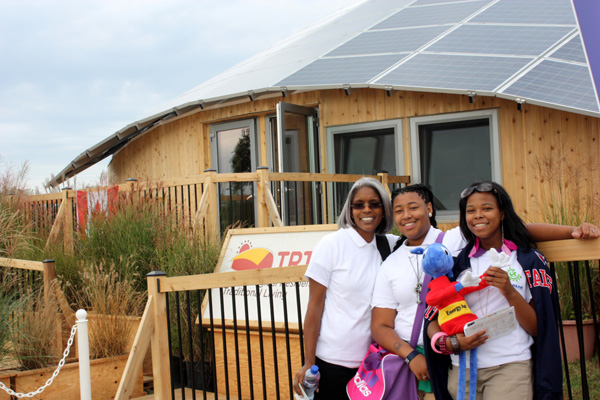
Source: U.S. Energy Information Administration
Team California's house looked like a pillow
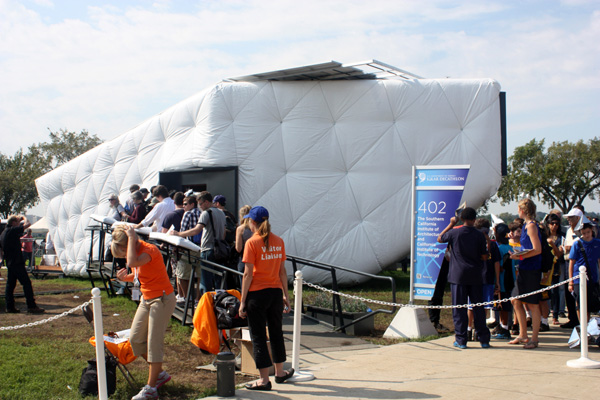
Source: U.S. Energy Information Administration
The overall winner was the University of Maryland's "Watershed"!
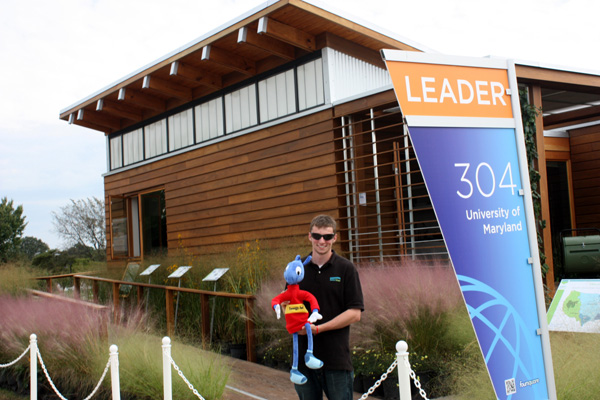
Source: U.S. Energy Information Administration
You could see the Washington Monument from Team Parson's "Empower House"
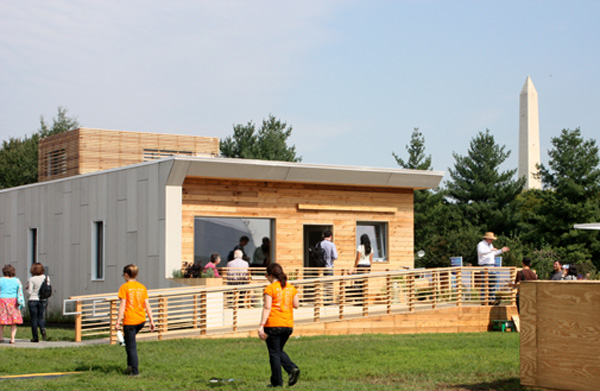
Source: U.S. Energy Information Administration
Greetings from Washington, DC. On September 28, 2011, I visited the U.S. Department of Energy’s Solar Decathlon 2011, held at the National Mall's North Potomac Park.
The Solar Decathlon is like the "olympics" of environmentally friendly house design for college students. Every two years the Department of Energy sponsors a competition for colleges and university teams to design, build, and operate solar-powered houses that are energy-efficient, affordable, attractive, and easy to live in. The college teams spend two years designing and building the houses. Then they ship them to Washington, DC and put them together on the National Mall, where they are judged in 10 ("deca") contests.
Each house must produce as much energy as it uses on average during the year in the region and climate where the team comes from. So they must be very energy-efficient and have a solar photovoltaic (PV) system to provide the electricity they use. The houses formed a Solar Village, connected together in a "micro" electricity grid to share the electricity that each house produces with their solar PV systems.
There were 19 teams from colleges and universities all over the United States, Canada, and as far away as Belgium, China, and even New Zealand! The diversity in designs was really amazing, especially from the international teams.
- Team Canada's "TRTL" had a curved PV system that looked like a turtle shell.
- Team China's house was built out of the shipping containers they used to bring their house to the United States.
- Team Belgium's house could be erected in just a few days by two or three people!
- Team New Jersey's house was made out of concrete, even the furniture and sinks.
- The walls of the two Florida teams' houses were mostly glass.
- Team California's house looked like a giant pillow!
A couple of the houses had "green roofs" with special plants growing on them to help keep the house cool in the summer and warm in the winter. The green roofs also reduce and slow down water run-off, which was a benefit this year because it rained a lot during the Decathlon. Some of the houses captured roof water runoff and filtered water from the sinks and showers for use to water plants.
And all that was just about the outside of the houses. Inside, each house had very efficient lighting, heating and cooling appliances, and plumbing fixtures to reduce the amount of energy and water they use. Most houses had solar systems to heat water and some to heat the house in the winter.
One of the biggest challenges was to create a comfy and nice house with only 1,000 square feet of floor space. Some houses had movable walls, so you could change the shape of rooms, and beds that you could stow out of the way. Each house had an entertainment system, and a home computer or tablet to control and monitor the performance of the house's systems.
The University of Maryland was awarded the blue ribbon this year, with the most combined points for the 10 contests. Purdue and New Zealand came in a close 2nd and 3rd. But I think all the teams were winners. Just to have the chance to be on a team and get your project to the Mall and compete must have been such a blast.
Altogether about 4,000 students were involved in the teams' projects, a few lucky ones got to come to DC to construct and showcase their team's home. I got to meet a few of these amazing people, and they sure were busy as ants caring for their projects and answering questions from the hordes of people who came to see the really great houses they had built. The teams had students in all kinds of fields from engineering and architecture, to social studies, communications, marketing, multi-media, computer graphics, information technology, and web page and phone app design. So, a lot of people could join the team and contribute a wide range of skills and interests to the team's house.
Luckily, the DOE's Decathlon website www.solardecathlon.gov has photos and videos of the houses, so if you weren't able to get to Washington to see them in person, you can check them out on the website.
I'm really "ant-icipating" the Decathlon 2013 – maybe some of you will be on a team!!!!


